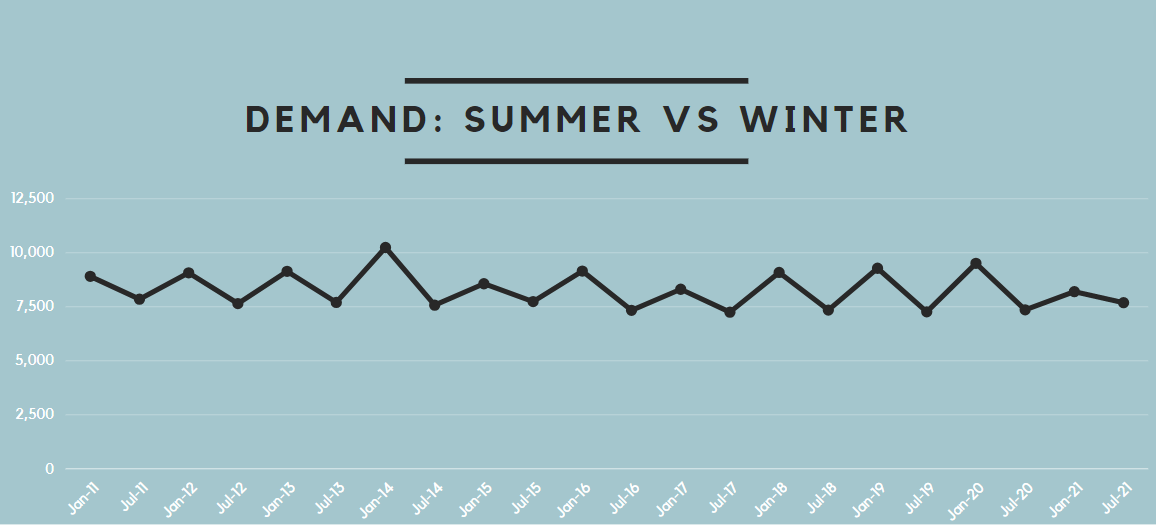Does winter or summer cause more energy demand?
Australia’s National Electricity Market (NEM) is in the throes of an energy crisis that has partially being driven by an abnormally cold start to winter. But how does energy demand change throughout the year and would this crisis have been worse if it happened in summer?
Summer and winter are both challenging seasons for everyone involved in the electrical market.
Heatwaves and cool spells both place a significant strain on the electricity system in Australia as they increase the amount of heating or cooling occurring in homes and businesses.
Extremely hot or cool temperatures can also impair key electrical infrastructure, which can also play a part in causing electricity outages in both summer and winter.
Furthermore, extreme weather events such as bushfires, flooding, lightning, tornadoes and severe storms can all affect electricity networks.
Each season has their own unique mix of challenges for Australia’s electricity markets.
Summer
Heatwaves and extreme high temperatures cause high energy demand through increased air conditioner use during summer. Heatwaves have the greatest impact on the network when they impact multiple states at the same time. Some other common summer impacts include:
- High temperatures impair the operation of key electrical infrastructure. This can be compounded by high energy demand that often occurs at the same time.
- Generators, power lines, transformers and other electrical equipment can underperform or fail when temperatures get too hot. Renewable energy infrastructure is also impacted by the heat with solar panels and wind turbines underperforming.
- During summer, raging bushfires often threaten the electricity network and transmission lines. The Black Summer bushfires during 2019 and 2020 damaged power lines and caused widespread power outages that impacted tens of thousands of households in Australia’s southeast.
- Dust storms in summer can cause sparking between lines, sometimes initiating more fires and line failures.
Winter
Cool temperatures also increase energy demand with increased heater use in homes and businesses. Some of the typical winter impacts on the electricity market include:
- Strong winter winds in southern Australia can damage transmission lines causing black outs or outages.
- Key electrical infrastructure also underperforms when temperatures get too cold.
Is energy demand higher in summer or winter?
According to the Australian Energy Market Operator (AEMO), maximum operational demand occurs in summer, driven by cooling loads across most of Australia’s states and territories. However, Tasmania’s peak demand occurs in winter, driven by heavy heater use amid bitterly cold outdoor temperatures.
The chart below shows that demand in Victoria has been higher in January (summer) than July (winter) during each of the past ten years.

Chart: Highest energy demand (MW) in Victoria during the past 10 years in January and July. Source: AEMO’s Aggregated Price and Demand Data - Historical
In AEMO’s 2019 summer readiness report, they stated that weather forecasts are “now the most important input into forecasting of demand and supply of generation for the National Energy Market (NEM)”.
Given the intrinsic relationship between temperature and electricity demand, Australia’s warming climate is likely to have an impact on demand and infrastructure in the future.